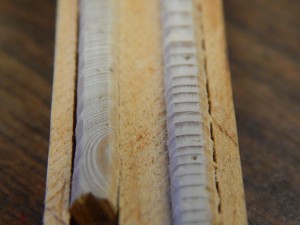Hello! My name is David Morgan. I am going into my senior year at Plymouth State University where I am studying meteorology. I was born and raised right here in the great state of New Hampshire. Naturally I enjoy spending time outdoors and taking advantage of the amazing environment available here in the Granite State. I am an avid hiker who loves the mountains in every season of the year. I have been interested in meteorology for almost as long as I can remember. I have known I wanted to study the atmosphere since I was 9 years old. It was then that I watched in amazement as a towering thunder cloud built upward into the sky and pulsed with electricity. I have been fascinated by the study of weather ever since. Weather affects everybody in one way or another. My passion is in understanding why different weather related phenomenon are occurring and how they are impacting everyone. This summer I will be working on a project that combines both meteorology and hydrology in order to gain a comprehensive understanding of the causation behind high stream flow in a small watershed.
I will be working with Eric Kelsey, Scott Bailey and many others on this project. The main goal is to develop a forecasting model that takes into account both the environmental and the atmospheric conditions that are causing high stream flow here at Hubbard Brook Experimental Forest at watershed 3. In order to do this we will be studying the 99.6th percentile of instantaneous stream flow events. In other words we will be looking at the most extreme daily flow values from the entire stream flow record. Each event will then be analyzed in terms of parameters such as precipitation, snowmelt, antecedent soil moisture, the type of storm that caused the event, the storms track and the atmospheric moisture content. A hydrograph will be created for each event and base flow will be separated out so that an event runoff volume can be determined. This will allow us to understand exactly how much water was coming out of the stream during each peak flow event. After this we will compare the  different causation variables to the event runoff volume and determine which factors play a larger role in high stream flow. Once we know what is causing high stream flow events we plan to develop a binary regression model using statistics that will predict a probability of a high stream flow occurrence knowing the atmospheric and environmental conditions.
different causation variables to the event runoff volume and determine which factors play a larger role in high stream flow. Once we know what is causing high stream flow events we plan to develop a binary regression model using statistics that will predict a probability of a high stream flow occurrence knowing the atmospheric and environmental conditions.










